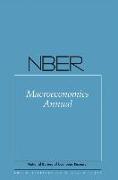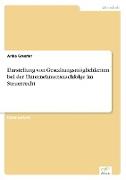Nber Macroeconomics Annual 2016
BücherAngebote / Angebote:
The thirty-first edition of the NBER Macroeconomics Annual features theoretical and empirical research on central issues in contemporary macroeconomics. The first two papers are rigorous and data-driven analyses of the European financial crisis. In the first paper, Pierre-Olivier Gourinchas, Thomas Philippon, and Dimitri Vayanos, analyze the causes of the Greek Crisis of 2010 and the policy efforts that followed in its wake. The second paper, by Olivier Blanchard, Christopher J. Erceg, and Jesper Linde, demonstrates that under plausible modeling assumptions, fiscal expansion by the core euro area economies would be likely to have a substantial positive effect on the GDP of nations on the periphery of the euro area, provided the European Central Bank holds policy rates low for a prolonged period. In the third paper, Oscar Jorda, Moritz Schularick, and Alan M. Taylor introduce a new set of stylized facts about economic growth and financial ratios as well as a new macro-financial database for the study of historical financial booms and busts. The fourth paper, by Jeffrey R. Campbell, Jonas D. M. Fisher, Alejandro Justiniano, and Leonardo Melosi, studies the historical effects of Federal Reserve efforts to provide guidance about the future path of the funds rate. It concludes that forward guidance did not advance the Federal Reserve s goals of macroeconomic expansion until late 2011 when the Fed introduced calendar- based communications. The fifth paper, by Fernando Alvarez, Franceso Lippi, and Juan Passadore, explores the distinctions between models of price setting and associated nominal frictions using data on price setting behavior. It also investigates the sensitivity of a number of key macroeconomic analyses to the assumed model of price stickiness. In the sixth paper, Paul Beaudry, Dana Galizia, and Franck Portier consider a broad issue in economic dynamics, namely the possibility that the economy displays nonlinear dynamics that lead to cycles rather than long-term convergence to a steady state. The volume also includes a short paper by Lawrence Summers on the decline in the rate of global economic growth. After noting that the cumulative rate of per capita income growth in the United States since the onset of the Great Recession in December 2007 is no greater than that in the nine years following the start of the Great Depression in 1929, Summers explores a number of potential contributors to this situation and outlines a number of consequences of a persistent low-growth environment.
Folgt in ca. 15 Arbeitstagen




